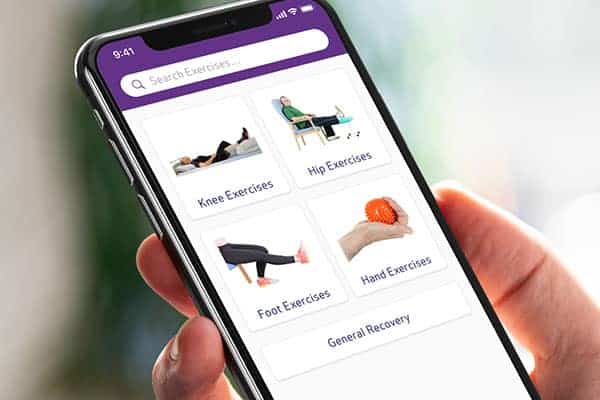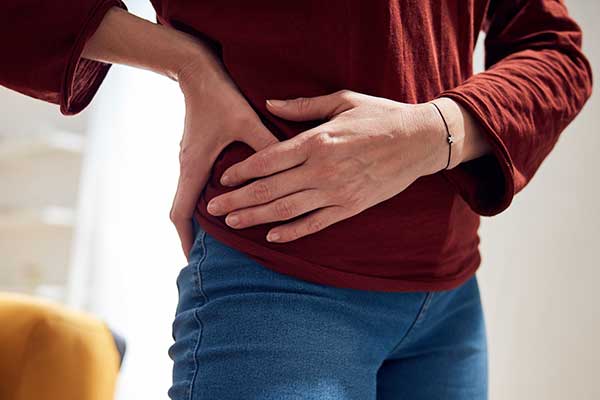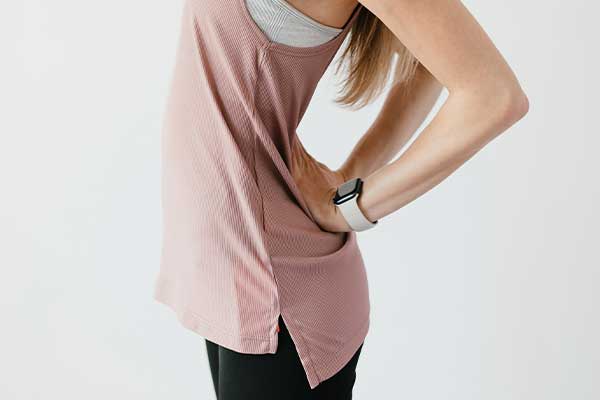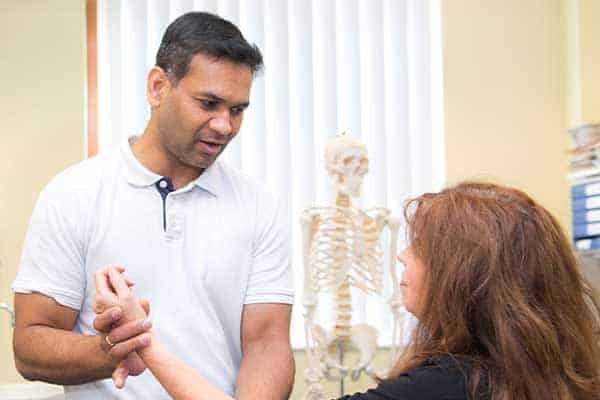Hip impingement refers to a condition that causes pain in your hip and groin.
The medical term for this condition is Femoro-acetabular Impingement (FAI), meaning that there is some kind of abnormal contact between the head of your thighbone (femur) and your hip joint socket (acetabulum).
What causes hip impingement?
In fact, all hips will naturally impinge, but only at the extremity of a movement. With FAI, the impingement occurs earlier in the movement.
This type of impingement can be caused by a combination of different factors, including your own unique hip anatomy, which is influenced by both genetics and lifestyle.
Playing a sport that involves changes of direction, or causes the hip to be rotated frequently, can make you particularly prone to hip impingement.
There are two very common types of FAI. In a Cam impingement, the head of your femur is slightly too big for your hip socket. In a Pincer impingement, your hip socket is deeper than it needs to be. Both of these can cause pain and restricted movement.
What are the symptoms of hip impingement?
For most people:
- You feel pain at the top of your leg, in the hip joint and the groin.
- Your pain becomes worse with deep squatting.
- Your pain becomes worse when you flex your hip, such as when sitting.
- Your pain comes after a change of direction when running.
For some people:
- You may experience a restricted range of movement as a result of the pain.
- You might feel and/or hear a ‘clicking’ in your hip joint.
How is hip impingement diagnosed?
If you have any concerns about your hip, you should make an appointment with your doctor, particularly if the pain was caused by a fall or an accident.
They will be able to rule out other possible causes of your symptoms and establish if you are likely to have FAI. If appropriate, they will refer you for x-rays or scans.
What are the treatment options for hip impingement?
Try to identify the particular movements and activities that aggravate your symptoms. Depending on the severity of your pain, you may need to avoid these completely for a short period, to give your hip joint a chance to rest, or simply adapt the way you do them.
Put an ice pack on your hip joint area for 5-10 minutes, three to five times a day, to relieve pain. (Do not put ice directly next to skin as it may cause ice burn. Wrap it in a damp tea towel. Remove the pack if irritation increases. Allow the area to return to normal temperature before reapplying the ice.)
You could try anti-inflammatory painkillers such as Ibuprofen. Some anti-inflammatory painkillers also come as creams or gels, which you can rub over your hip area. These tend to produce fewer side-effects than those taken by mouth. If you cannot take anti-inflammatory painkillers, other painkillers such as paracetamol, with or without codeine added, may be helpful. Ask your doctor or pharmacist for advice.
It is important not to lose strength and flexibility in your muscles, and if possible to increase their strength in order to take some of the burden off your hip. So keep moving as much as you can, gradually build up through a programme of appropriate exercises and if possible follow a structured rehabilitation programme guided by a physiotherapist.
What is the prognosis (outlook) for hip impingement?
Depending on your individual anatomy and other health factors, it may be that surgery is recommended to repair damage and reshape or even replace your hip joint bones.
However, in most cases your doctor is more likely to recommend physiotherapy as a better option for you.
In some cases, having hip impingement may increase your risk of developing arthritis later in life.
How can I prevent recurrence of hip impingement?
As discussed, hip impingement is caused by your anatomy as well as your lifestyle.
There are anatomical changes that can only be made with surgery, but these may not be necessary to improve your symptoms.
Adapting your activities and continuing with your exercises may prevent your hip impingement ‘flaring up’ again for some time.
Look at raising your seat height and slightly reclining the backrest, which opens up your hip angle and reduces pinching at the front of your hip joints.

Pocket Physio | Download now
Search for ‘Pocket Physio’ on the Apple App Store for iOS and the Google Play Store for Android to download for free.




